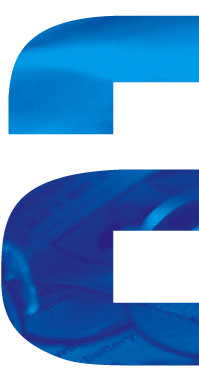artax
N E W S L E T T E R
| Authors: Circulation: 20’000 (distributed electronically) |
lic. iur. Bigna Gadola Legal Counsel Licensed Auditor RAB |
Fabio Bruderer, MLaw Tax Advisor |
Pillar 3a – twice the benefit
Dear Sir or Madam,
Introduction
The Swiss pension scheme is based on what is called the “3 pillars”. Beside OASI and the occupational pension funds, private provision has been enshrined in the constitution, too. As the legal system supports individual savings, contributions to pillar 3a are exempt from tax, up to a certain amount.
For better readability we are using the general term “3rd pillar”. However, this always stands for pillar 3a.
Who can pay how much?
Basically, all employed taxpayers (with either a salary or a compensatory income which is subject to OASI-contributions) are entitled to pay into pillar 3a. However, the maximum amount of contributions that are permitted may vary.
Anyone registered with a pension fund is entitled to pay a maximum of CHF 6’739 per calendar year. For 2015, this amount will be raised by CHF 29 to CHF 6’768. Anyone not registered with a pension fund may only pay up to 20% of his or her income, and not more than CHF 33’696 (33’840 in 2015).
Jobseekers are exempt: as they are deemed as only temporarily unemployed and remain insured against death or disability with their pension fund during that time, they can continue to make payments up to CHF 6’739 until unemployment insurance cover runs out.
Anyone who remains in employment beyond normal retirement age can, for a period of up to five years, continue to make contributions to pillar 3a.
Where can contributions be made?
Almost all banks and insurance companies offer 3rd pillar pension plans. Whichever option you choose, the tax benefits are the same. However, certain issues need to be considered depending on the pension plan of your choice:
The Insurance Option
Basically you sign a long-term contract with an insurance company, committing yourself to make payments of a fixed amount over several years. In return the insurance company guarantees a secured retirement annuity and interest return at a fixed interest rate. Furthermore, it is possible to grant premium exemption in case of an inability to work at any stage of the duration of the contract. Due to the fixed long-term commitment it is necessary to take into account that major changes (e.g. unemployment) can make it difficult to keep up payments. Caution should be exercised in case you are considering moving abroad: although you are bound to continue your payment of premiums, you will lose any tax benefit, as most countries only accept their own pension plans.
The Bank Option
By comparison, you have more flexibility choosing a bank for your 3rd pillar. Next to a classic savings account, currently with interests between 0.75 - 1.65% depending on bank, you can also opt for a securities plan. This option has the advantage that each year, you can decide how much you pay in premiums, up to the maximum amount, or even forego paying in.
When can capital be drawn?
Basically there are two different situations in which capital can be drawn.
Early drawing
Among the circumstances that allow an early drawing of pension capital are a permanent move abroad, buying property (with owner-occupation) or officially becoming self-employed. However, in each case, the regulations of the relevant compensation offices must be taken into account.
Drawing on retirement
The earliest moment to draw capital is five years before normal retirement age, i.e. either 59 or 60 years. The capital needs to be drawn not later than the moment you retire. Opting for drawing it in form of a monthly pension is not possible.
What are the tax benefits?
The contributions you make whilst employed can be deducted from your taxable income in the same year. Additionally, neither your pension savings nor your gains will be taxed. At the moment of payment of capital, statutory tax privileges come into effect. This means that capital is taxed separately from other income.
Hereafter we would like to illustrate a few tax benefits with a specific example. For this we are basing calculations on a married couple and an amount of CHF 6’739. The results show the tax savings compared to a married couple without contribution:
| Gross salary (in CHF): | 50’000 | 100’000 | 250’000 | 500’000 | ||||
| Tax benefit Basel | 368 | 1’738 | 2’397 | 2’470 | ||||
| Tax benefit Liestal | 716 | 1’679 | 2’804 | 2’874 |
When drawing please be aware that you obtain the full amount of your 3rd pillar capital in a lump sum which will then be taxed accordingly. Owing to progression, it might prove interesting for you to actually draw your pension capital in instalments. You should also consider putting it into different institutions. Thus, you protect your retirement capital from any risk of a collapse of your bank or insurance company.
In the following example we compare the overall tax burden if you have amassed your retirement capital in only one 3rd pillar or evenly in several 3rd pillars and draw on your capital in different tax years (example for Basel).
| Capital (in CHF): | In 1 year | In 2 years | In 3 years | |||
| 150’000 | 9’962 | 6’850 | 5’380 | |||
| 300’000 | 25’862 | 19’925 | 15’431 |
Conclusion
Payments into the 3rd pillar are beneficial both from a tax point of view and for your personal pension plan, and are to be recommended should you have the means available. If you still want to profit during the tax period 2014 you should ensure that your contributions are credited before the end of the year.
In case of questions or individual calculations, the artax team is at your disposal.

